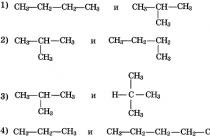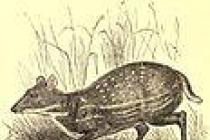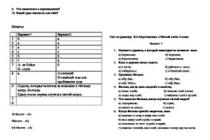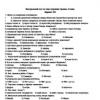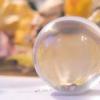The role of fertilizers in the phytocenosis is multifunctional. They are the source nutrients for plants; enhance the mobilization of nutrients in the soil; increase the energy of life processes and change the properties of the soil; perform many environmental functions.
Currently, a wide range of different types and forms of fertilizers are used in world agriculture. In terms of chemical composition, all fertilizers are divided into organic (manure, slurry, bird droppings, peat, various types of compost, straw for fertilization, green manure) and mineral (nitrogen, phosphorus, potash, complex and micronutrient fertilizers).
Depending on the origin and place of receipt for local (bone meal, wood ash, limestone, dolomite, etc., gypsum-containing, sapropel), industrial and unconventional waste from various industries and utilities (phosphate slag, phosphogypsum, shale ash, defecate, sewage sludge waters).
By the nature of the effect on the soil and plant growth, fertilizers are divided into direct and indirect. The application of direct fertilization improves plant nutrition in relation to nitrogen, phosphorus, potassium and other elements. These are nitrogen, phosphorus, potash and other fertilizers. Indirect - lime, gypsum and other fertilizers that improve soil properties.
Mineral fertilizers are divided into simple, or one-sided, if they contain one nutrient (nitrogen, phosphorus or potassium), and complex, or multilateral, if the fertilizer contains two or more basic nutrients. They are also subdivided into macro- and micronutrient fertilizers. Macro fertilizers contain macronutrients (N, P, K, Ca, Mg, S), which are included in the composition of plants and are consumed by them in significant quantities (from hundredths to several percent of dry weight). Micronutrient fertilizers contain trace elements that are present in plants and are consumed by them in micro- and ultramicro-amounts (from thousandths of a percent to 10 -6 -10 -12 percent on dry weight of plants).
2.1 Organic fertilizers
Reproduction of soil fertility, creating a positive or deficit-free balance of nutrients for plants and humus in the soil are the most important tasks in conditions of intensive farming. These tasks can be successfully solved with the systematic scientifically grounded use of organic and mineral fertilizers in crop rotation. Therefore, the importance of organic fertilizers in domestic agriculture will never decrease, even if agriculture is fully satisfied with mineral fertilizers. It is possible to achieve an expanded reproduction of soil fertility and a systematic increase in agricultural productivity by using organic fertilizers: manure, various types of composts, poultry manure, green fertilizer, excess straw, etc. proper storage and use of organic fertilizers.
Manure - basic organic fertilizer. It has a complex multilateral effect on the soil. It is a source of nitrogen, ash macronutrients (P, K, S, Ca, Mg, Fe) and trace elements (B, Mo, Mn, etc.). Manure replenishes the supply of mobile nutrients in the soil, improves the circulation of macro- and microelements in the plant. In addition, when applying manure, the physicochemical properties of the soil, water and air conditions are improved, the harmful effect of soil acidity on plant growth and the vital activity of microorganisms is reduced, the plants are provided with carbon dioxide. 20-30 tons of manure contain 1 ton of ash substances, 0.5 tons of Ca and Mg.
Manure can be litter and non-litter. The constituents of fresh litter manure are mainly solid and liquid animal excrement and litter. The excrement contains about 40-50% of organic matter, the same amount of nitrogen and 60-70% of phosphorus and potassium from their initial content in the feed. Rye straw (2-6 kg per head / day), high-moor peat (6 kg) and low-lying peat (20 kg) are used as bedding. The output per cow is 10-12 tons of manure. The chemical composition and fertilizing value of manure depend on the type of animals, feed, type and amount of litter, storage method, etc.
Nutrients in manure in an easily digestible form are in small quantities, they become more available after decomposition.
There are four stages of manure decomposition:
Fresh, weakly decomposed manure - straw slightly changes color and strength;
Half-ripe manure - the straw is dark brown, loses strength and breaks, manure loses 10-30% of its mass and the same amount of dry organic matter;
Overripe manure is a homogeneous mass, manure loses 50% of its mass and dry organic matter;
Humus is a loose dark mass; manure loses 75% of its mass and dry organic matter.
The best is considered to be semi-rotten manure.
Litter-free manure - liquid manure, accumulates on livestock industrial complexes. This is a mixture of animal excrement with water, sometimes including feed losses. In liquid manure, 50-70% of nitrogen is in a soluble form, which is well absorbed by plants in 1 year. The rest is organically bound (protein) nitrogen, as it becomes mineralized it turns into a form available to plants. Phosphorus is in organically bound form, but is readily available to plants. Potassium - in a soluble form, is easily absorbed by plants.
Liquid manure obtained at large industrial livestock complexes must be decontaminated before use
Slurry is a valuable, fast-acting nitrogen-potassium fertilizer. Depending on the type of animals and storage time, it contains from 0.02 to 0.8% nitrogen and from 0.05 to 1% potassium. Nitrogenous compounds are represented by urea, uric and hypuroic acids.
Composting - one of the methods of accumulating local organic fertilizers. Compost usually consists of two components, which differ in their resistance to decomposition by microorganisms. One of them (peat, soil) acts as an absorber of moisture, ammonia and weakly decomposes without composting, the other (manure, feces, etc.) is enriched with microflora and contains a significant amount of easily decomposable nitrogen-containing organic compounds.
Compost can be considered ready when all of its mass becomes homogeneous and crumbly. Usually peat-manure compost is prepared in the ratio of peat: manure as 1: 1; peat slurry and peat feces - in the ratio of peat: slurry or peat: feces as 1: 0.5 or 1: 1, earthen - 1: 1. When composting, you can add phosphorite flour 1.5-2% by weight of the component. Compost from municipal waste - composted at high temperatures, pre-cleared of iron and glass. They contain 0.6-0.7% nitrogen, 0.6-0.8% potassium and 0.5-06% phosphorus on dry matter basis. It is most expedient to apply composts in autumn for fall plowing or in spring for fall plowing.
Bird droppings in terms of fertilizing qualities, it surpasses manure, concentrated fertilizer. Contains 1.5-2.5% nitrogen, 1-2% phosphorus and 1% potassium, 0.3% iron and trace elements Mn, Zn, Co, Cu. To reduce nitrogen losses, it is composted with peat, straw, sawdust.
Green fertilizer is called the green mass of legumes, plowed into the soil in order to enrich it with nitrogen and organic matter. This technique is also called sideration, and plants cultivated for green manure - siderates... With green fertilizer, up to 35-40 t / ha of organic matter (excluding roots), containing 100-200 kg of nitrogen, is introduced into the soil. The nitrogen utilization rate of green fertilizer (in the first year of operation) is twice as high as that of manure, while its losses are excluded. Leguminous plants (lupine, seradella, sweet clover, winter vetch, astragalus, sainfoin rank, etc.) are mainly cultivated as siderates.
Green fertilizer is an irreplaceable means of increasing the fertility of low-cultivated soils, especially in areas where there is a lack of manure or it is difficult to transport it. Green fertilizers reduce the weediness of fields, fulfilling a phytosanitary role, increase the productivity of crop rotation and the quality of the products obtained.
Straw - an important source of organic fertilizer. It contains on average 0.5% nitrogen, 0.25% phosphorus and 0.8% potassium. In combination with an appropriate mineral fertilizer, liquid manure or legumes used as green manure, straw in terms of action on the humus content in the soil is often not inferior to the equivalent amount of manure
There are several ways to use straw for fertilization. First of all, straw that is crushed and scattered across the field is plowed in in the fall when the plow rises or in the spring in areas of sufficient moisture. It is advisable to combine this technique with green manure. In some cases, especially on soils with a heavy particle size distribution and in humid regions, straw scattered over the field is not plowed over, but is cut superficially with a cultivator, disc harrow or milling cutter. It is necessary to plow the straw first of all in the fields remote from farms, where it is economically unprofitable to transport manure.
Straw is also used as mulch in the fight against water erosion and soil deflation. All this indicates the need for widespread use of surplus straw for fertilization as an important source of soil humus as a factor of its fertility.
In order to increase the yield and make the garden healthier, many agronomists and gardeners actively use various types of mineral fertilizers. They are inorganic compounds, which contain nutrients necessary for plants.
Soil may contain sufficient nutrients for plant growth, and sometimes some element may not be enough. So, in peat soils there is a deficiency of molybdenum, sandy - magnesium, in chernozem - manganese, etc. The use of mineral fertilizers of various types, which are effective remedy replenishment of macro and microelements in agriculture.
Types of mineral fertilizers
Mineral fertilizers are produced from special substances by physical or chemical processing. Mainly mineral salts for potash fertilizers, ammonia for nitrogen and apatite concentrate for phosphorus. The composition of mineral fertilizers contains macro- (phosphorus, nitrogen, calcium, potassium, sulfur, magnesium), absorbed by plants in large quantities, and trace elements (boron, manganese, cobalt, iron, molybdenum, zinc, copper), which are also necessary for normal growth and development, but in smaller doses.According to the state of aggregation, the main types of fertilizers are distinguished:
Solid,
- liquid.
Certain types and types of mineral fertilizers are chosen for purchase and application, depending on the intended goals of crop production. All mineral fertilizers classified by nutrients, which include:
Nitrogen, contain nitrogen in various compounds,
- phosphoric,
- potash,
- complex or as they are also called complex,
- micronutrient fertilizers, carry microelements to cultures.
By the amount of nutrients in one composition, mineral fertilizers are divided into simple ones, which contain only one specific substance, and complex (complex) ones, where 2 or more nutrients can be combined (potassium nitrate, ammophos, diammophoska, etc.).
What are mineral fertilizers by fraction:
1) Powder. The particle size is usually less than 1 mm. Among the fertilizers with such a fraction, phosphate rock can be noted. Its disadvantages include poor solubility and flowability. When applied by agricultural machinery, powder, technological holes are often clogged, etc.
2) Fine-grained. This group includes potassium chloride of the Small brand, potassium sulfate, ammonium sulfate. This fraction is characterized by higher flowability in comparison with powder and is satisfactorily applied by agricultural equipment.
3) Crystalline. The crystal size is more than 0.5 mm. The main mineral fertilizers of this type are potassium salt, ammonium sulfate. The flowability of crystalline is similar to fine-grained, if the humidity is normal it is slightly higher.
4) Granular mineral fertilizers, simple and complex, are the most widespread and popular in agriculture. Currently, almost all common mineral fertilizers are granulated. They are characterized by high flowability. During storage, this species cakes worse than fertilizers of the above fractions, thanks to these advantages, they are introduced without problems by agricultural machinery.
Types of mineral fertilizers used in agriculture
Numerous studies and practical use have proved more than once that the use of mineral fertilizers in agriculture can improve soil fertility and, accordingly, increase yields. Almost all living organisms need substances that allow regulating the rate of biochemical reactions, and plants are no exception. But this or that culture does not always feel good on the plot due to the lack of necessary elements in the soil. For example, applying small amounts of molybdenum can help increase the yield of legumes. Other crops prefer boron and boron fertilizers are applied for them, etc.In Russia and all over the world, the production of mineral fertilizers is the most important, high-tonnage branch of the chemical industry. The range of manufacturers is growing and changing every year. In agriculture, as we said above, a variety of types of mineral fertilizers are used for specific purposes, which are set by agronomists.
Among all types, the most popular are nitrogen fertilizers, which are represented by such names as:
Ammonium nitrate (nitrogen 34.4%),
- ammonium sulfate (nitrogen 21% + sulfur 24%),
- urea, it is also urea (today it is a product with the highest amount of nitrogen in its composition - 46.2% among solid types).
Among the common phosphorus mineral fertilizers, it should be noted:
Simple superphosphate (contains 26% phosphorus and a starting dose of 6% nitrogen),
- ammophos (phosphorus 52%, also with a share of nitrogen, it is 12% in ammophos),
- diammonium phosphate (phosphorus 46%, with nitrogen 18%).
The most commonly used potash fertilizers:
Potassium chloride (60% potassium),
- potassium sulfate (chlorine-free, potassium in it 50%),
- kalimag (potassium magnesium, potassium 40%, magnesium on average 5%).
Complex complex mineral fertilizers include in their type:
Azofosku, nitroammofosku (NPK \u003d 16-16-16%),
- ammophoska (NPK \u003d 15-15-15%),
- diammophos (NPK \u003d 10-26-26%),
- NPK (13-19-19%).
- fertilizer brands of various NP, NPKS composition.
The market also presents such a name as fertilizer mixtures. These are special complex agricultural fertilizers made in any combination of NP, NK, NPK, NPS, NKS or NPKS elements necessary for an agronomist with varying the dose of each element, which is called for specific crop growing conditions.
Used in liquid form:
Ammonia water (25% nitrogen),
- urea - ammonia mixture (UAN 32% nitrogen),
- liquid complex fertilizer (in ZhKU, nitrogen 11%, phosphorus 37%).
Almost all of the above brands and types are packed in small packages of 1, 3 and 5 kg - these are fertilizers for shops and retail. For agriculture and large consumers, products are packaged in large containers - 50 kg bags, 500 - 1000 kg big bags, or simply delivered to consumers in bulk and in bulk by railway mineral wagons and tanks.
With each year of active cultivation of the site, the soil is depleted, the content of nutrients decreases. The provision of the soil with the missing components is provided by modern preparations. Chemical fertilizers can contain one or several elements, be complex. Most soil types do not have a balanced chemical compositionrequired for productive agriculture. In clay and loamy soils, there is a lack of iron. Sandy areas contain very little nitrogen. Mineral fertilizers solve the problem of lack of chemical elements.
Nutrition with minerals ensures good development, health of garden and vegetable garden crops, and high yields. Modern drugs have detailed instructions by application. The exact composition is indicated on the package and you can easily calculate the required amount of feeding. Mineral products are universal. You can carry out root and foliar feeding.
With the correct and timely application of factory fertilizers, safe nutrition of plants occurs. Using modern drugs allows you to provide the site with one missing element. A full range of nutrients enhances the overall fertility of the soil.
Nitrogen is one of the most important plant nutrients. It is nitrogenous compounds that affect the rapid development of seedlings in spring, the growth of lush greenery with flowers, shrubs and trees. The nitrogen content in the soil depends on the climatic

Vegetables and fruits that appear regularly on the dinner table should be tasty and nutritious. Farmers manage to achieve great taste and fast plant growth only with the help of high-quality fertilizing. Of particular benefit to young ovaries, and

Correct use of fertilizers has a positive effect on plants, helps to acquire many useful and protective properties, and increases natural immunity. At the same time, careless and inept use of dressings can backfire and lead

Mineral fertilizers are essential elements for full growth and development and are involved in the construction of plant vital organs. The most demanded are nitrogen, phosphorus and potassium. They are absorbed in large quantities, and their absence

In crop production at an industrial level, various stabilizers, growth stimulants and a large number of other preparations are regularly used. IN household a plant growth regulator such as Vympel has recently found applications. Features of use Regulators

For the harmonious development of plants, a complete feeding is required, including organic and mineral fertilizers. The introduction of organic matter is not difficult - you can make top dressing at home, or buy a ready-made complex in a store.


